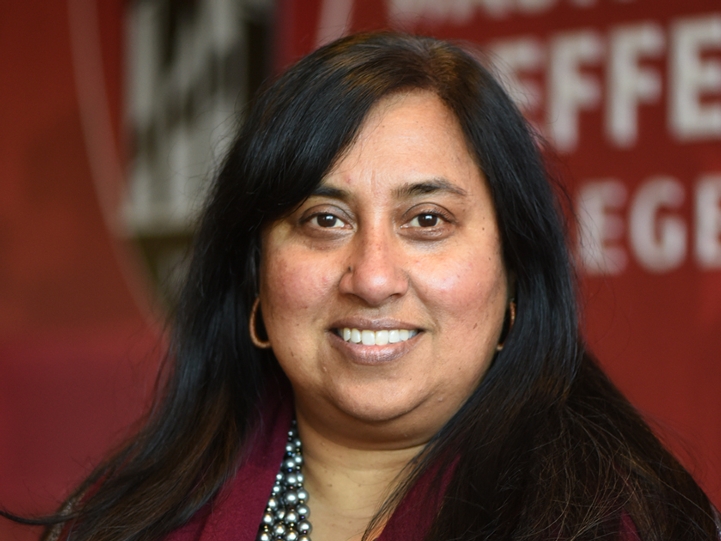
Living in Two Academic Years - Reflecting on the Current and Anticipating the Next
Supporting the Profession Professional Level AVP or "Number Two" VP for Student Affairs
May 17, 2022
Several years ago, a colleague shared a curious observation, likely identified by others, but something I had not heard articulated – the A months (August and April) in higher education are the most taxing and challenging. In student affairs, our work in August involves ramping up toward the start of all the potential and promise of an upcoming academic year, triggering optimism for what is to come. For most of us this means the culmination of summer planning, on-boarding of new staff, training of various groups of student leaders, orientation programs and the integration of about 25% of our student body, and the implementation of new programs, services, and systems. It’s exciting and rewarding. Perhaps most importantly, the return of students on campus is fulfilling and rejuvenating.
April, on the other hand, brings different challenges and opportunities. During April, our work involves both stewarding the culmination of the work of the current academic year and planning for the start of the next. I think of April as a time when we work in two academic cycles. Putting it in broad strokes, there is a great deal of energy spent on getting to the finish line of the academic year. Depending on what is top of mind on our respective campuses, we are likely attending to bringing things to closure, honoring the accomplishments of our graduating students, planning for meaningful celebrations and acknowledgements for our students, and trying to capture all the feedback and data we can to inform our understanding of the impact of our work.
Simultaneously, April is a time when we look forward. In late Spring, we start anticipating our plans for fall. Our teams are busy with recruiting and selecting new student leaders, starting to confirm plans for fall trainings and programming, aligning resources for new systems and software platforms, planning for summer campus upgrades and capital projects, conducting professional staff searches, and mapping out planning retreats and summer projects. For some, this is also a time when we focus on annual reviews and work to engage our faculty partners, aiming to complete these engagements before their summer hiatus. This season of future planning holds a promise of things to come amidst a time of reflection from what we are living day to day.
This year, we layered in the realities of our post/in-the-midst-of pandemic lives. On top of the predictable aspects of what it means to be juggling the balance of the current and future work, we are continually adjusting for an evolving landscape of the impacts of COVID-19 management on our campuses and in the world. This spring has forced us to re-learn how to re-engage our communities and staff while developing new ways to convene safely. This means that now we are not only engaged in the work that is typical at this time of year, but we are having to re-think and re-educate others on how the work, celebration, reflection, and engagement are accomplished.
Needless to say, it has been extraordinarily challenging across our campuses. I am confident that we are adjusting our work with students to be attentive to their realities. This likely means that our campus processes for supporting students are on overdrive, as are our staff teams. The heightened anxiety that we are experiencing compounds the student and campus experience. For students, it is taking more support to get them to the finish line, coupled with a more here-and-now perspective. And for our divisional colleagues, it’s been taxing to provide that support while ramping up future planning and preparation.
Many of us face diminished expression of interest in student leadership positions and lesser campus engagement in programming, both of which prompt us to think in different ways about incentivizing these opportunities and/or redesigning the work. The great resignation impact is making it challenging to fully embrace the comprehensive delivery of a robust student success experience and invest our tired teams in planning for the future. In short, in addition to the challenges of living in the predictable work of April, we have additional challenges to consider and conquer.
So, we find ourselves embracing new realities, not all of which we yet fully understand. We will have to think of new ways to attract talent which will likely breed new ideas and solutions to our reimagined work. We may also need to find innovative ways to capture the attention and engagement of our students. Finally, we must continue to lead our campuses through a redefining of our work and how we accomplish it.
Despite the complexity of our current state, we have much to look forward to as we look ahead to fall. We know that connection, well-being, professional skill acquisition, inclusion, and community continue to emerge as critical for our future work. Students are in desperate need of support which can, if we attend to it, guide our commitment to developing and implementing processes which focus on student development. It is not easy to leave behind the complexities of our COVID-19 adapted work that left little room for developmental designed work. Yet, the opportunity now exists to leap forward. That said, we have an amazing opportunity to provide leadership to model managing the needs of the present and realistic and achievable opportunities for the fall.
About the Author
Eva Chatterjee-Sutton is the vice president of student life & dean of students at Washington & Jefferson College and a member of the James E. Scott Academy Board.